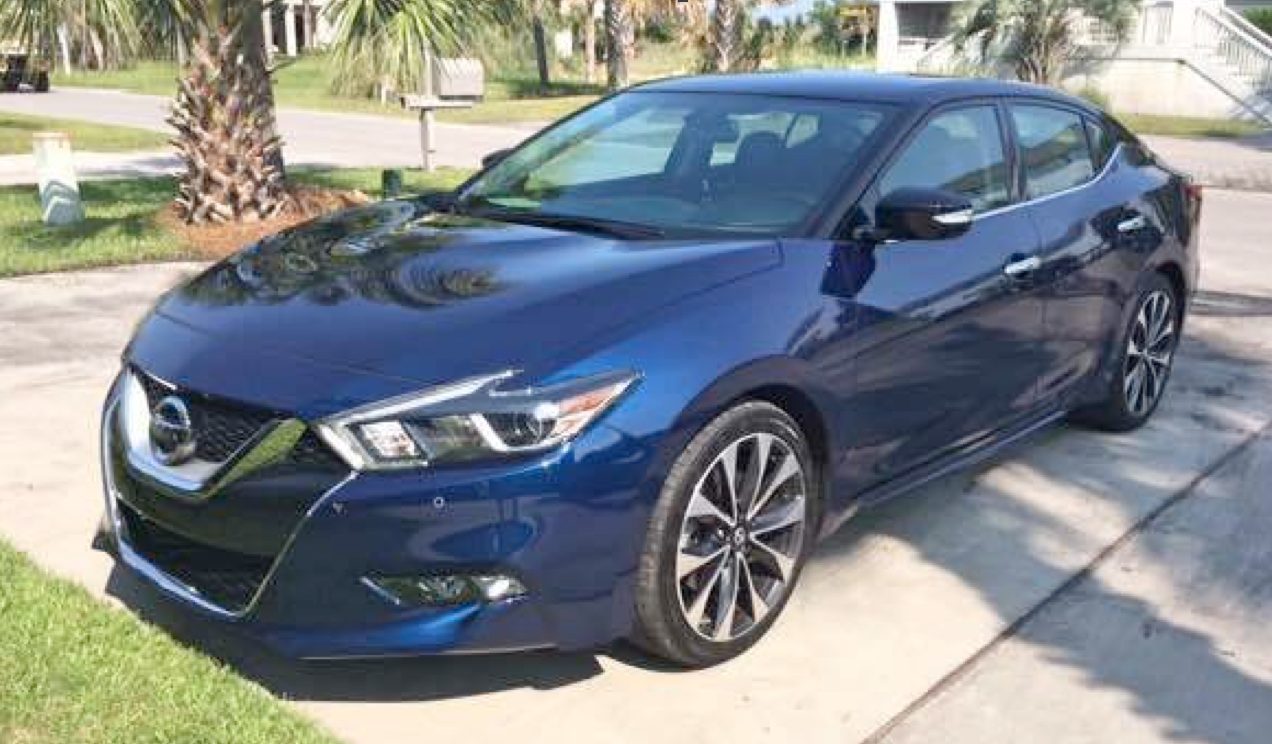Nissan touts their 2016 Maxima as a “4DSC” or four door sports car. It’s not. Take this car to the Porsche Test Track by the airport and it’ll slide right off at turn #2 as the Germans bellow in laughter behind you.
It is, however, an absolutely brilliant semi-luxury sedan inside and out. But before I shower praise onto it, let’s talk about what defines a “sports car,” and why the Maxima isn’t one.
A sports car, in simple terms, is one that performs well at high speeds and in corners. They’re the athletes of the automotive world, juking around beige Corollas on the highway and thrilling their owners with go-kart-like handling on curvy roads.
All sports cars, from the $24k Mazda Miata to the $89k Porsche 911, share common engineering; they’re either rear-wheel drive or all-wheel drive. This role separation allows the rear wheels to power the car so the front wheels can focus on turning, allowing the car to handle better and with more power. So why are most cars front-wheel drive? Well, it’s much cheaper to engineer and manufacture FWD cars, and most cars don’t have 300 horsepower to tame.
Problem is, the Maxima does. When the front wheels are responsible for channeling that much power and trying to turn, they’ll lose traction during high-speed turns and the car won’t turn enough. This is called understeer, as this guy generously demonstrates by wrecking his Ford Focus.

learning the difference between a sports car and a “sporty” car the hard way
Now, you might be thinking understeer isn’t a problem for the sensible, law-abiding motorist who doesn’t slide into the Trader Joe’s parking lot doing 93. And you’d be right. But having a sports car isn’t just about performing dangerous stunts or attending track events; it’s about driving a car that likes to be driven. Little moments like snaking through mountain roads at 38 instead of 35 and emerging into straights with a throaty exhaust note are pure magic to motoring enthusiasts. Attempt the same maneuvers in the Maxima and you’ll feel the front wheels scrambling for grip. When you push a sports car to the edge, it goes hell yeah, let’s goooooo! The Maxima, on the other hand, sort of goes alright, that’s enough, could we not?
It’s a shame the Maxima isn’t a true sports car, because in every other respect, it’s absolutely sublime.
I balked the first time I sat in my loaner Maxima. Aside from the Nissan badge on the steering wheel, there’s almost nothing here to indicate you’re in a sub-$40k car. Buttons sit right where they should be, and a snazzy, diamond-patterned metal tastefully wraps around the driver and passenger sides. The cross-stitched Alcantara and leather seats with are a standout; I can’t think of prettier seats I’ve seen in a car under $100k. Oh, and they’re supremely comfortable.

But the best part of the interior is the infotainment system. Hallelujah. Long have car makers plagued us with plodding infotainment systems seemingly pulled from the dial-up era, with muddy graphics and frustrating response times. Nissan’s feels refreshingly modern, with crisp visuals and instantaneous responses. I could input a new GPS location at a stoplight with ease; it’s no iPad, but it’s a huge leap over the woeful systems of yesteryear.
While it’s not a true sports car, the Maxima still offers impressive driving characteristics. Shifts are crisp and unnoticeable thanks to the continuously variable transmission, and the ride is smooth and refined. In Sport Mode the car will leap to 60 in less than 6 seconds, and despite the brawny 3.5L V6 engine, you’ll still get a generous 30 MPG highway.
To sum up, the Maxima is comfortable, economical, fast, well-appointed, tastefully designed, and well-engineered. It breaks my heart that Nissan stunted their creation’s potential with front-wheel drive, but if you’re looking for a winner in the ~$400/mo lease range, your search may end here.

